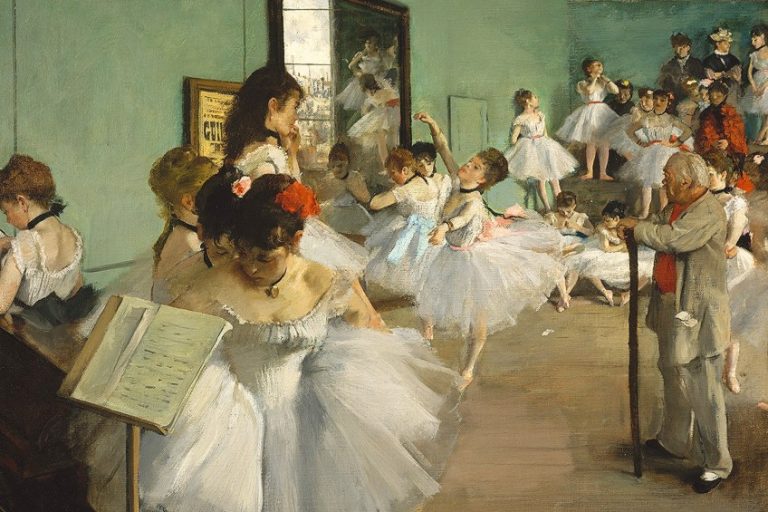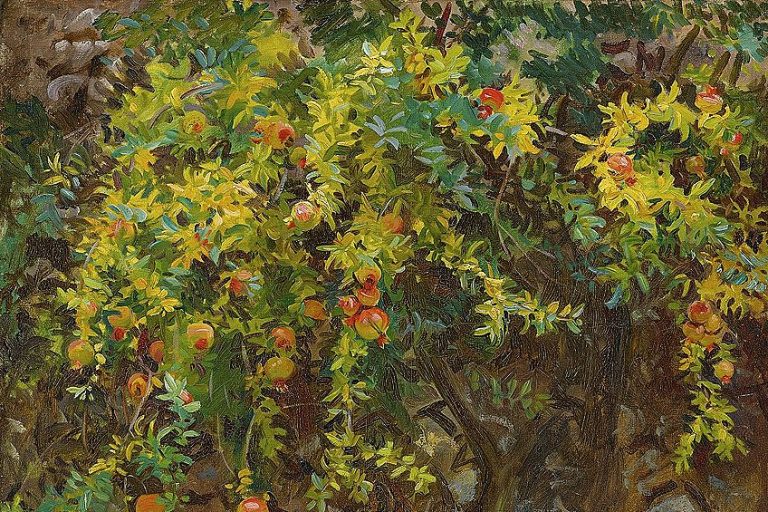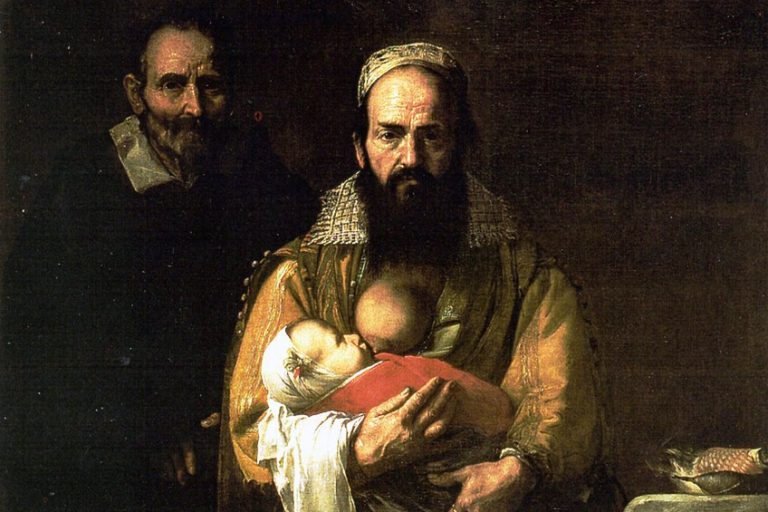What Is a Mural? – Understanding the Importance of Mural Art
What is a mural painting? Murals have existed for as long as people have, providing a type of significant evidence of life from prehistoric times to the present. Humans have been leaving traces of their presence all over the world, from the cave art at Lascaux Grottes to the street mural art of today. In today’s article, we will be exploring the history of mural wall paintings as well as mural examples.
The History of Mural Painting on Walls
The oldest scribblings, carvings, engravings, and paintings are what gave us invaluable knowledge of our past and the forebears that we have today. These murals are also of great significance to humanity because they depicted daily life, daily scenery, and frequently religious traditions of the era in which they were made, giving us an irreplaceable glimpse into the diversity of our cultures over time.
Murals have historically covered the interiors and exteriors of many public structures.

These include castles, shrines, tombs, exhibitions, libraries, churches, and the homes of wealthy art patrons, while also maintaining their original meaning and purpose: to depict society through stories, value systems, fantasies, and transformation.
More lately, murals have extended to the streets and architectural features.
What Is a Mural Painting?
Today, mural art is any work of art produced or applied straight to a permanent surface. Muralism, a popular painting method used by numerous artists, including artists like Michelangelo Buonarroti and Leonardo Da Vinci, reached its height of popularity in the 1920s, following the Mexican Revolution.
Murals took on a new significance as a potent visual communication tool during the Mexican Muralism movement, which aimed to advance public opinion and spread unifying social and political ideas.
Mural painting emerged as the most significant form of expression via the massive works of “the great three”: José Clemente Orozco, Diego Rivera, and David Alfaro Siqueiros. These works are frequently the focus of debate and are consistently a symbol of unity, freedom, and optimism. The largest of these trends was the Chicano art movement in the 1960s, which was greatly influenced by Mexican mural painting.

Murals, which show the contemporary and historical political and religious differences in the region, are another one of Northern Ireland’s most distinctive characteristics. The nation has witnessed about 2,000 wall mural paintings since the 1970s that are devoted to the struggle against racism and ecology, among many other concerns.
The Berlin Wall was another well-known location where political murals were prevalent. Between 1961 and 1989, when it was built on the Western side, several murals were painted there, including those by Thierry Noir and Keith Haring.
Modern Mural Painting on Walls
Murals are a potent instrument of liberation, freedom of speech, social action, and propaganda when they remain faithful to their function of expressing religious and political ideals within civilizations. Painting murals on walls is seen as a crucial component of socially relevant art and has a big impact on how politics and art interact.
Mural art is being employed in many locations across the world, mostly in South America, to represent and speak for towns, countries, and cultures.
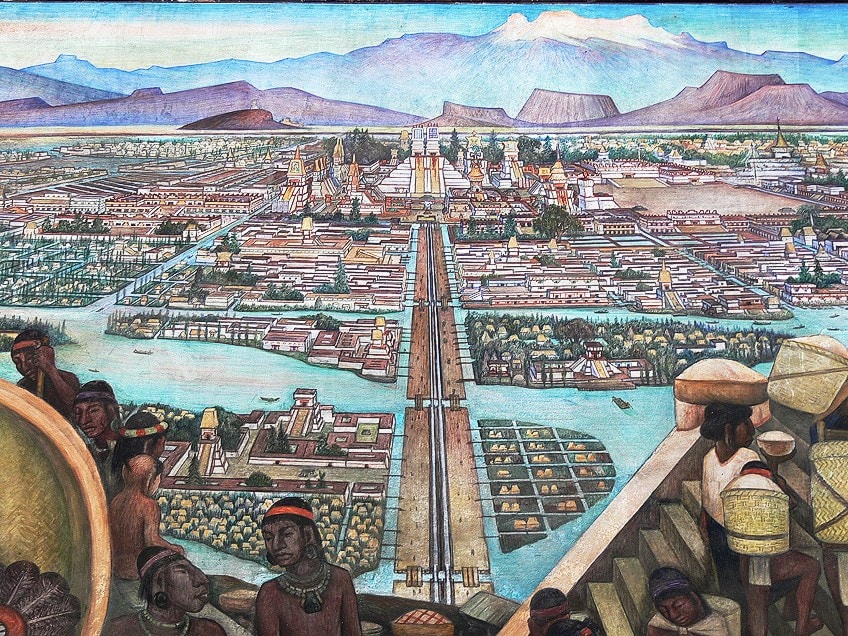
Murals also serve as an aesthetic component that aids in their blending into their surroundings, transforming them into genuine cultural objects and even colossal works. Murals can also be made for various reasons outside their clear-cut meanings, such as advertising or just decorating a wall with a lovely image. To create promotional campaigns and designs, big brands frequently work with mural painters as urban art becomes more widely accepted.
Many well-known street artists and graffiti artists also successfully paint murals all over the world, showcasing incredible skills and talent that have helped them develop their own highly distinctive artistic styles.
A vast number of young artists arrived and produced absolutely outstanding pieces, including those by Blu, Millo, Nychos, Phlegm, Icy & Sot, and many more, creating an amazing body of mural art that the entire world can experience and connect to. This was made possible by the impressive legacies of artists like Shepard Fairey, Keith Haring, FAILE, and many others.
Mural Wall Painting Techniques
Muralists have created several techniques that are adapted to their “canvases” since murals span fairly vast surfaces that may have a variety of textures, constitutions, and characteristics. Unquestionably, fresco paintings, in which paint is put on plaster on drywall, are one of the oldest techniques. The paint reacts with the air after being combined with water and pigment over wet plaster to produce a chemical reaction that fixes the pigment particles.
Other mediums that have been used in murals include tempera, oil, acrylic, and paints done with a brush, roller, aerosol, or sprayer.
Most encaustic colors were applied in cold conditions throughout the Greco-Roman era. One of the earliest mural painting techniques is tempera painting. In tempera, the pigments are attached to an albuminous substrate like diluted egg yolk.

Oil painting on canvas became popular in 16th-century Europe as an easier technique for creating murals. The benefit was that the work could be finished in the studio and then moved to the location where it would be hung on a wall or ceiling. Because oil paint lacks vibrant color, it might not be the best medium for creating murals. Additionally, the pigments are either more quickly impacted by environmental factors or are yellowed by the binder.
When the murals are done, layers of varnish or a shielding acrylic glaze may be applied to prevent surface deterioration and UV ray damage.
Recent innovations in mural painting by artists include wallscapes, which are big ads that may be painted straight on or printed as vinyl and then adhered to a surface. Due to the rigorous effort and the cost of murals, they are frequently commissioned by patrons, governmental institutions, or huge companies. They are occasionally made in violation of the law as well.

Following a consultation, the proposed mural is often given a thorough design and layout along with a pricing estimate that the customer must agree to before the muralist begins the project. To correctly scale the picture step by step, the area to be colored can be gridded to fit the design. Sometimes, the design may be projected straight onto the surface before painting and sketched with a pencil.
Some muralists prefer the spontaneous style and may paint the mural instantly without any preliminary drawing.
Young aficionados also utilize POP clay combined with adhesive or bond to create desired designs on canvas board in the rapid, modern form of mural painting. Later, the canvas is removed to let the clay cure. The canvas and the form can be painted with the colors of your choice and then varnished when they have dried.
Digitally printed murals can be used on surfaces as an alternative to airbrushed murals. Murals that already exist can be captured and then replicated in almost original quality. Pre-made murals and decals have the drawbacks of being frequently mass-produced and lacking the charm and uniqueness of original artwork. Their specific thoughts or wants cannot be added to the mural as it develops since they are frequently not fitted to the client’s unique wall sizes.
Some of the sizing and personalization constraints are addressed by Rainer Maria Latzke’s invention, the frescography process.
Significance of Mural Painting on Walls
Murals are significant because they bring art to the general populace. Muralists frequently need to be sponsored by a donor because of the scale, expense, and labor required to create a mural. The funding for many murals comes from patronage grants, which are frequently provided by the local government or a company.
For artists, this means that a large audience sees their work who may not have otherwise entered an art gallery.
A piece of art’s beauty enhances a city. Murals may be a somewhat successful instrument for accomplishing social emancipation or political objectives. Murals have occasionally been painted illegally or ordered by neighborhood taverns and coffee shops. The visual effects are frequently used as a lure to bring social concerns to the public’s notice. Murals in particular are a popular kind of state-sponsored public art that authoritarian governments frequently employ as a propaganda weapon.

However, some of those pieces still have aesthetic worth despite their propagandist nature. When placed in regions where people live and work, murals may dramatically alter the views of onlookers, whether intentionally or unintentionally. It may also be claimed that the existence of huge, public murals might enhance the visual quality of residents’ or employees’ everyday life at a workplace.
Before vinyl and digital posters were invented, large-format hand-painted mural artworks were the standard for ads in American cities.
Mural Examples
Which example of mural painting best defines the style? No one mural painting can fully encompass the entire medium, so let us look at a few mural examples. These have not only had an artistic statement but perhaps a social statement as well.
The History of Mexico (1935) by Diego Rivera
| Date Completed | 1935 |
| Medium | Mural |
| Dimensions (m) | 70 x 9 |
| Location | Mexico City, Mexico |
Our first example of mural painting shows Mexico’s history from antiquity to the present, with a focus on the struggles of the average Mexican people in opposition to the Spanish, French, and tyrants that ruled the nation at various stages in its history.
After the Mexican Revolution, government-sponsored murals were commissioned, mostly in Mexico City and the surrounding areas between 1923 and 1939 to commemorate the fall of the Porfirio Diaz regime.
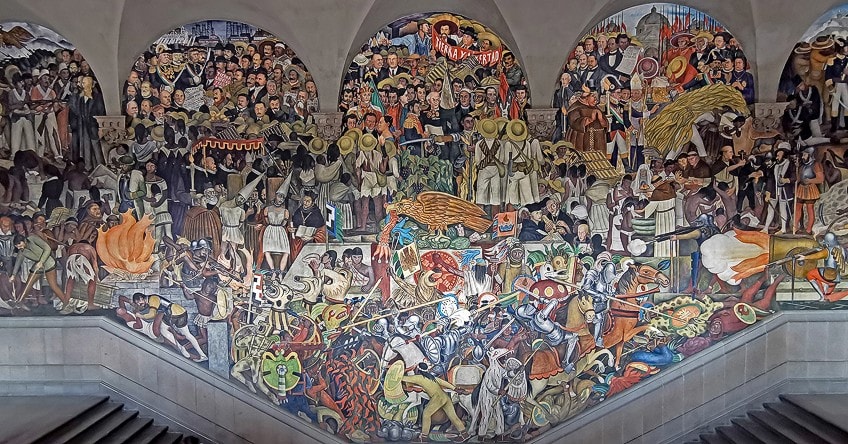
To paint images from Mexican history, the government hired several prominent painters, including David Alfaro Siqueiros, José Clemente Orozco, and Rivera. The mural painting by Diego Rivera was first painted on the National Palace’s stairwells in August 1929.
It took six years to be completed.
We the Youth (1987) by Keith Haring
| Date Completed | 1987 |
| Medium | Mural |
| Dimensions (m) | Unknown |
| Location | Philadelphia, United States |
Our second example of mural painting is the only one of Haring’s joint public murals that are still in its original place. The artwork was meant to serve as a temporary stand-in until additional row homes finally covered the mural’s wall.
“We the Youth” is a two-story mural that spans three walls, including the front and back halves of a rowhouse and a portion of the fence around a private backyard.
On a white backdrop, the mural shows dancing figures that are outlined in black. Green, yellow, blue, and red is used to fill in the figures’ outlines. Sometimes a single color is used, while other times patterns and symbols are used. Along with the artists, Haring collaborated with a group of 14 high schoolers from New York and Philadelphia.
The vast majority of us have at some time or another seen a mural. On your way to work each day, you could encounter murals. From the smallest settlements to the greatest major hubs in the globe, murals may be seen everywhere. Murals are a vital kind of public art that has been enhancing towns for ages. An old-fashioned type of artwork known as a mural is created by painting directly on a wall or ceiling. Although murals can refer to paintings on fired tiles, mosaic embellishments are often excluded unless they are an integral element of the image’s overall composition.
Frequently Asked Questions
What Is a Mural Painting?
Since the beginning of time, when the first people painted on cave walls, there have been murals. Since murals became a common type of public art, they have been seen in historic buildings and urban areas. Although murals are often seen outside, they may really be made on surfaces inside and outside of buildings or other structures.
What Are Murals Created For?
Murals have a variety of uses. In the past, murals were largely created to enhance public or private settings. But throughout time, murals have also evolved into a platform for social or political criticism. Additionally, murals may be utilized to remember or document a historical occasion. By bringing color and beauty to otherwise boring building walls and streets, murals may completely change a public area. Urban city walls are unsightly and sometimes go overlooked. But by adding murals, we may completely change places that were formerly drab or depressing.
Isabella studied at the University of Cape Town in South Africa and graduated with a Bachelor of Arts majoring in English Literature & Language and Psychology. Throughout her undergraduate years, she took Art History as an additional subject and absolutely loved it. Building on from her art history knowledge that began in high school, art has always been a particular area of fascination for her. From learning about artworks previously unknown to her, or sharpening her existing understanding of specific works, the ability to continue learning within this interesting sphere excites her greatly.
Her focal points of interest in art history encompass profiling specific artists and art movements, as it is these areas where she is able to really dig deep into the rich narrative of the art world. Additionally, she particularly enjoys exploring the different artistic styles of the 20th century, as well as the important impact that female artists have had on the development of art history.
Learn more about Isabella Meyer and the Art in Context Team.
Cite this Article
Isabella, Meyer, “What Is a Mural? – Understanding the Importance of Mural Art.” Art in Context. July 22, 2022. URL: https://artincontext.org/what-is-a-mural/
Meyer, I. (2022, 22 July). What Is a Mural? – Understanding the Importance of Mural Art. Art in Context. https://artincontext.org/what-is-a-mural/
Meyer, Isabella. “What Is a Mural? – Understanding the Importance of Mural Art.” Art in Context, July 22, 2022. https://artincontext.org/what-is-a-mural/.




